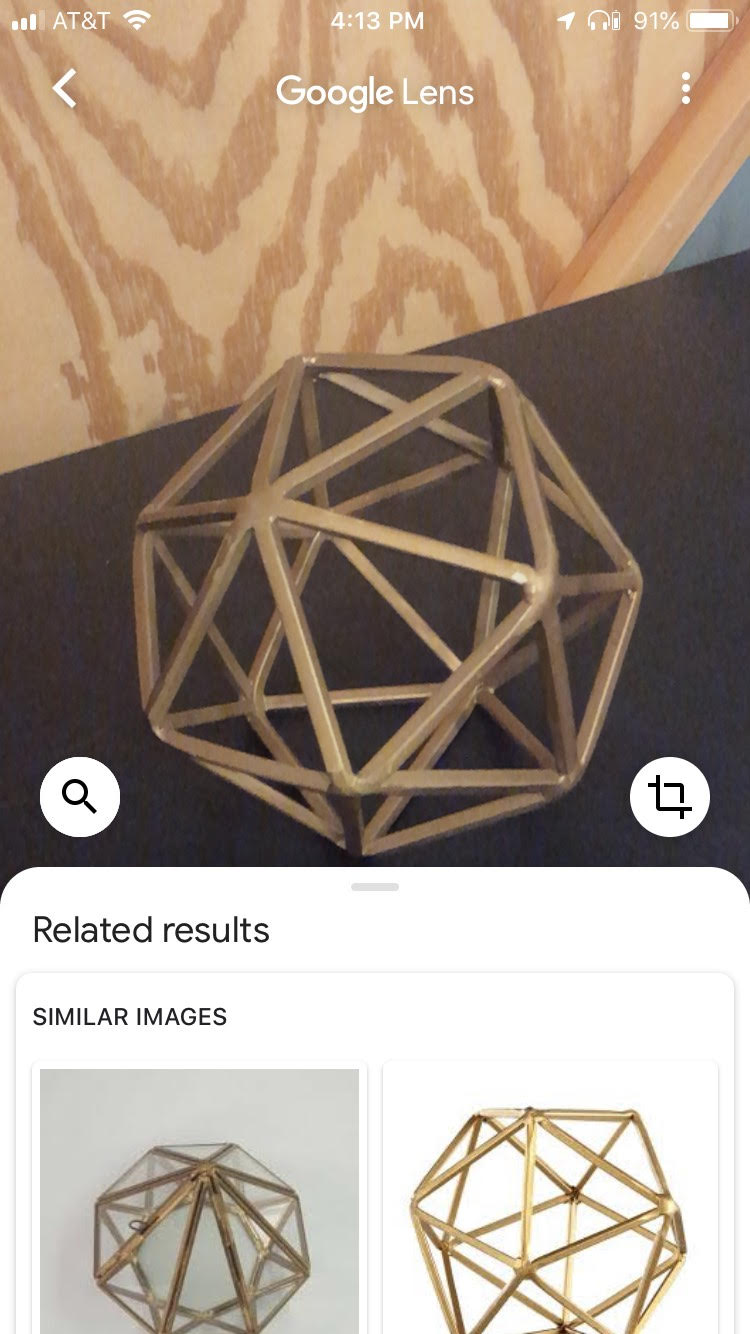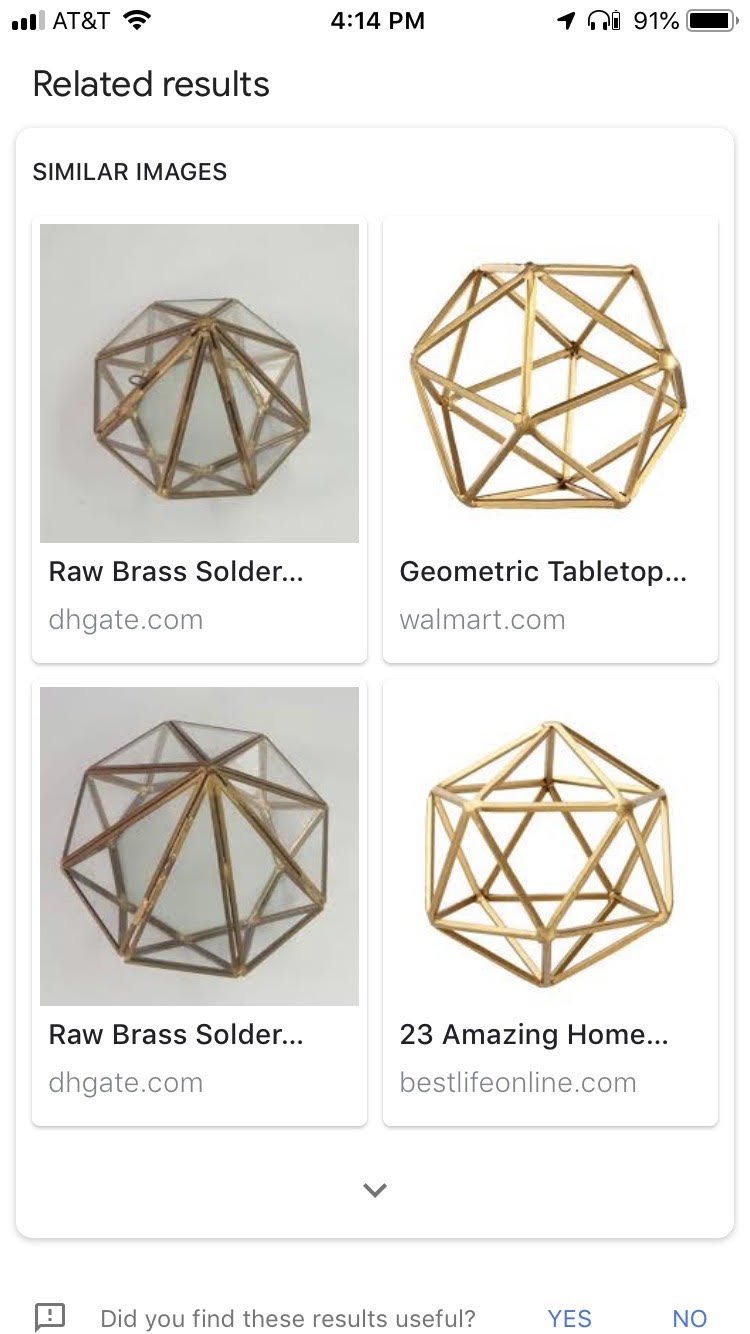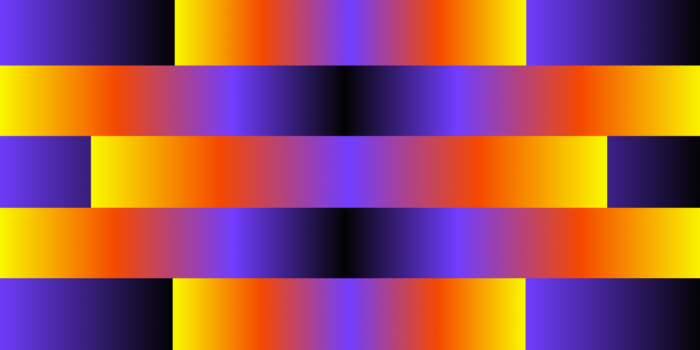About one out of every four searches across the entire internet are for images. If you’re reading this blog right now, I can nearly guarantee you’ve searched for one before (maybe even today). But what if you’re searching for an image that’s difficult to describe with words? Well, that’s where visual search comes in.
Let’s start with a scenario. Say you’re looking to re-decorate a room in your apartment and you need new furniture. You search through the popular home decor sites and blogs, but can’t seem to find the right piece. You don’t know exactly what you’re looking for, but you’ll know it when you see it.
But then, in the conference room of your WeWork, you see it! The perfect accent piece for that end table by the window!
But who even makes this item? How would I even describe it in Google? Can someone just tell me where to buy this thing?!



What is Visual Search?
Visual search uses real-world images as the input for online searches. It’s a bit of a catch-all term, as it encompasses internet images (via reverse image search), screenshots, or photographs. These queries are then absorbed by AI and machine learning to understand the content and context of these images and return a list of related results.
As seen in the example above, this technology can be a huge boost to eCommerce businesses. Even without any information on brand or specific product names, customers can still find your products online after seeing them in the real world.
Visual search can be particularly valuable in areas like fashion or home decor, where shoppers are able to search for a theme or style that may be difficult to put into words. The technology allows users to search a general theme or aesthetic in a way that would be difficult, if not impossible searching with words alone.
Before you dismiss this technology as a novelty, a recent eMarketer study showed that over 60% of millennials would feel comfortable incorporating visual search into their digital shopping experience. With this expectation that the technology will continue to grow in use, Garter estimates that, “by 2021, early adopter brands that redesign their websites to support visual and voice search will increase digital commerce revenue by 30%.”
Current Visual Search Technology
Pinterest CEO Ben Silbermann believes, “the future of search is going to be about pictures instead of keywords,” and that vision is clearly reflected in their product output. His company is currently at the forefront of visual search, with their latest update in September 2019 boasting the ability to identify 2.5 billion images.
Pinterest Lens allows users to highlight specific sections of a Pin and search to find visually similar Pins. It also allows users to submit their own photos and use those as the query to find similar Pins.
As of February 2018, Pinterest was driving over 600 million visual searches per month (up from 250 million per month in February 2017), so it’s safe to assume that number is only increasing. But more importantly for brands and marketers is that for products priced less than $200, visual searches result in conversion rates of 8-10%.
Google of course is the undisputed leader in text search, but it’s recent updates to Google Lens shows their dedication and development to this growing technology. Originally released in 2017, the Google Lens app can identify over 1 billion images and the app itself recently passed over 50 million downloads. Beyond visual search for products, the app rolled out several new features at Google I/O in 2019, including the ability to scan and translate text, the ability to identify and learn more about landmarks, plants, or animals via image search, and the ability to highlight popular restaurant dishes by scanning menus.
In 2018, Amazon partnered with SnapChat for a visual search product (essentially Shazam for products) and later released SnapStyle within the Amazon app in June of 2019. Users can upload a photograph or screenshot of a fashion piece they’re looking for and StyleSnap will present the user with recommendations for similar items on Amazon that match. This product was also designed with influencers in mind, where their fans can quickly and easily shop the styles and products of their favorite personalities.
How Brands and Marketers Can Optimize
If Google Images was its own separate search engine, it would be the 2nd largest in the world, with over 25% of all web searches occurring there. With that in mind, it should be obvious how important SEO is to visual search.
- Name your images accurately and make sure they all have proper title and alt-tags. There isn’t much data that is readable in visual search, so getting your SEO fundamentals right is critical. The file names of all your images should be descriptive of the image, and the titles and alt-tags should contain your target keywords. Simple enough, but it’s important to help search engines understand the content and context of your images so they can index them properly.
- Submit your images to XML image sitemaps. This step ensures that search engine crawlers can easily access your images and show them among search results.
- For products, make sure the images are shown clearly and free of clutter to make it as easy as possible for visual search AI to process them.
Another low hanging fruit here is to consider advertising on Pinterest. As noted above, Pinterest image searches boast a very strong conversion rate and their users are already used to searching the site with images. Combine that with the fact that half of all Pinners have made a purchase after seeing a Promoted Pin makes testing a campaign here a no brainer for fashion and home decor brands. Pinterest offers “Shop the Look” pins where users can select specific parts of an image and are directed to pages where they can make a purchase.
Current Technological Challenges
The first major hurdle for visual search is growing user adoption. While Google and Pinterest both boast visual search numbers in the billions, that’s really not a lot when compared to the total search volume these sites receive.
So why are users slow to adopt? Well for one, users tend to have a certain impatience for technology that’s still “imperfect.” In the example from the intro where I was able to find that item via image search, I’ll admit that Google Lens failed to identify the other items on that shelf despite several attempts from different angles.
This puts visual search in a similar position to where voice search was a few years ago. When Siri was first released, while the technology was seen as a breakthrough, its usage was more of a novelty for the first few years. It was only when it could start to understand more complex commands and consistently return relevant search results that its adoption really took off.
Visual search could find itself growing in a similar way. As mentioned above, Google has added multiple features beyond just visual search to their app. Seeing someone pull out their phone and quickly translate a document or menu could be a source of demonstration virality, driving more people to download the Google Lens app, thereby making their transition into searching images much easier and more common.
Slow and steady, more use allows Google to collect more data and they’re able to invest more into developing the technology, which leads to better products, which leads to more adoption.
The second major challenge, at least for brands and marketers, is the lack of a paid search product. Unlike text search, visual search struggles to bring in outside audiences based on keywords or intent. While some visual searches will return “related products,” most visual searches are more similar to branded search terms. Even though the person searching might not know the brand or product, their search query is still for that specific item.
It’s likely that as the search product develops and AI is better able to understand the context of images, brands will better be able to position themselves within those results.
Currently, the related product results are driven by product markup and image meta-data, but it seems inevitable that contextual ad products like competitive targeting or a “sponsored related product” be added as options if there’s enough search volume for advertisers to be interested.
The Future of Visual Search
With any developing technology, it’s fun to make predictions about where it will go next. It’s safe to assume that technology will become more accurate and widespread, but what will be the end result of that?
It seems like only a matter of time before Facebook enters the space. Earlier in 2019, they acquired GrokStyle, an AI startup that powers the visual search for IKEA. Given visual search’s value to eCommerce, Facebook Marketplace seems like a natural fit to adopt the technology. An Instagram tie-in seems equally inevitable as well. Instagram Shopping ads already work by connecting images to a product page. They’re currently connected directly by the advertiser, but transitioning this to an automated process where users can do this from any photo would be a powerful tie in.
Visual search also seems to have a natural integration with chatbots. It’s no secret that tech companies are looking to automate as much customer service as they can and since both technologies are AI-driven, chatbots would be particularly useful at helping direct users to the proper pages during pre-sale shopping, as well as post-sale troubleshooting. Allowing users to use images here and not just text is just another touchpoint for visual search to add value.
Finally, visual search can have a huge impact on social listening. Right now, there are powerful tools that can help contextualize brands by showing you the most common words people use when talking about a brand on social. But think of how much data is lost for all the times your brand is in an image, but not mentioned in the text. How powerful could that be?
Imagine you’re a brand like Peloton, where a popular practice among its die-hard community is posting photos of their bike setups, or the ever so popular post-workout selfie. Think of how much Peloton could learn about its users if they were able to draw insights from those photos. What athletic apparel styles are their users wearing most? What other products (from wearables to water bottles) do they use during a workout? These learnings can provide all kinds of marketing and partnership data for Peloton to leverage for future products and campaigns.
All combined, visual search will ultimately make it easier for consumers to find the products they’re looking for, connecting the real world to the digital world in a more seamless way. We live in a culture dominated by images, and yet, using images as a way of starting search seems to be largely untapped. However, we see technology and adoption rising with each passing year. With the simultaneous rise of voice search, we may soon be living in a world where text search seems as antiquated as a rotary phone.
Of course, visual search is just one aspect of a successful SEO strategy to help your brand get found online. If you are a small to medium-sized business generating $3M+ in annual revenue, looking for an agency to take some work off your plate – feel free to reach out to our team for a consultation.







Wow! Though I search for images more than often, I never knew visual search as so much potential for a marketer. I am hoping to learn more about it and implement it in a project soon.
Thanks to Pinterest s core visual search technology and advanced image recognition, brands will get the benefit of their ads automatically showing up next to visually related products.